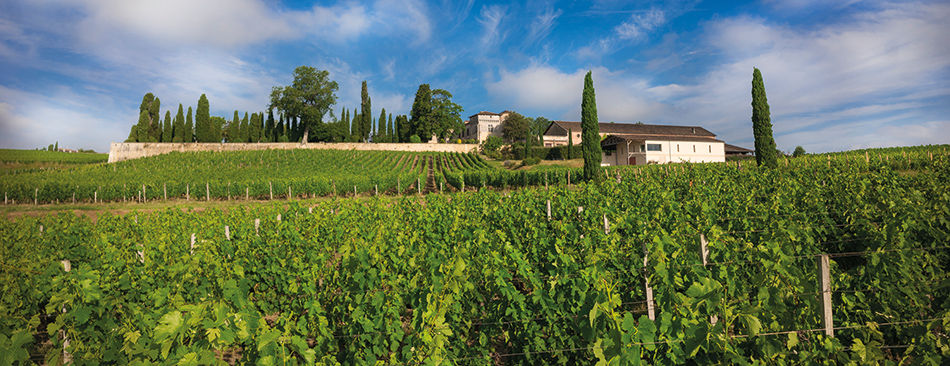A few decades ago, in its darkest hours, the wines of Fronsac were considered “medicine and virile wines” which were used to compensate weak blends of prestigious neighbors. Driving forces were necessary to rebuild the reputation and show the way. In Saillans, Château de Carles has been part of these standard bearers for 35 years. And continues to develop by taking new directions.

Château de Carles and its square tower crowned with machicolation is first of all a remarkable site, an elegant castle whose construction dates back to the 15th century, overlooking the vineyard and the Isle valley from the top of its terrace planted with high cypresses, reminiscent of a little Tuscany. It is also a whole history between the Middle Ages and Renaissance, welcoming in the 17th famous writers like La Boétie, Marguerite de Carles’s husband, or Montaigne. Then it was the turn of the beautiful and illustrious Marquise de Boufflers, the last ‘Lord of Carles’, who invited Jean-Jacques Rousseau, Beaumarchais and Diderot. In the 19th century, the Chastenet de Castaing family took over the estate, which was handed over a century later to Constance and her husband Stéphane Droulers, who was also a managing partner of the famous international investment bank Lazard Frères. Since 1983, eager to give an impetus to the vineyard, they have invested on all fronts, replanting the vineyard where Merlot predominates by 90% and renovating the cellars. In 94 they created Haut Carles, an upscale cuvee, flagship of the estate, quickly set in the spotlight by the press and indisputably recognized as one of the great bargains of Bordeaux in terms of quality-price. It was appointed 9 times a favorite of the Hachette guide!
Qualitative renovation is never finished in vineyars. A new turn was taken in 2018 with the mapping of the 19 hectares of the vineyard to make some adjustments, and a new team. The former banker now retired felt the wind turn. It was about modernizing the wines. He replaced Michel Rolland by Hubert de Boüard for this transition. “We are looking for wines that are less extracted, less woody, more charming. We bought inverted truncated tanks to initiate milder extractions and to get more silky tannins. We seek more balance, harmony, freshness. Our guideline: to erase the harshness. The idea is to offer more interesting wines, approachable in young vintages. Today, we are looking for a different style, more suited to our generation and new ways of consuming,” says Yannick Reyrel, the property's new consultant. The metamorphosis is accompanied by a change of label to differentiate the two wines (positioned at 26/34 euros all taxes incl consumer price for Haut Carles and 12/17 euros for Château de Carles) and build a commercial strategy too.
Bénédicte Chapard